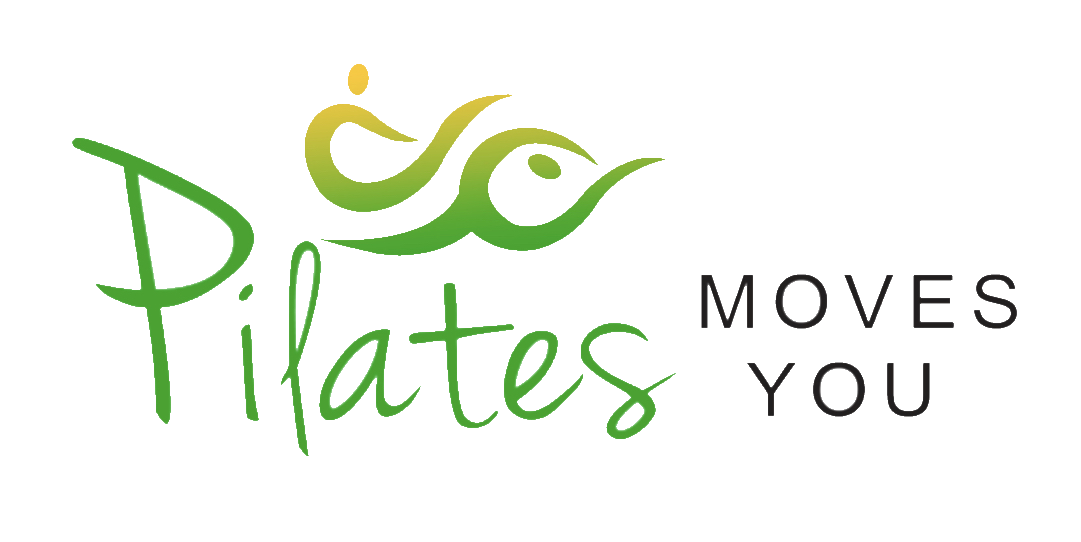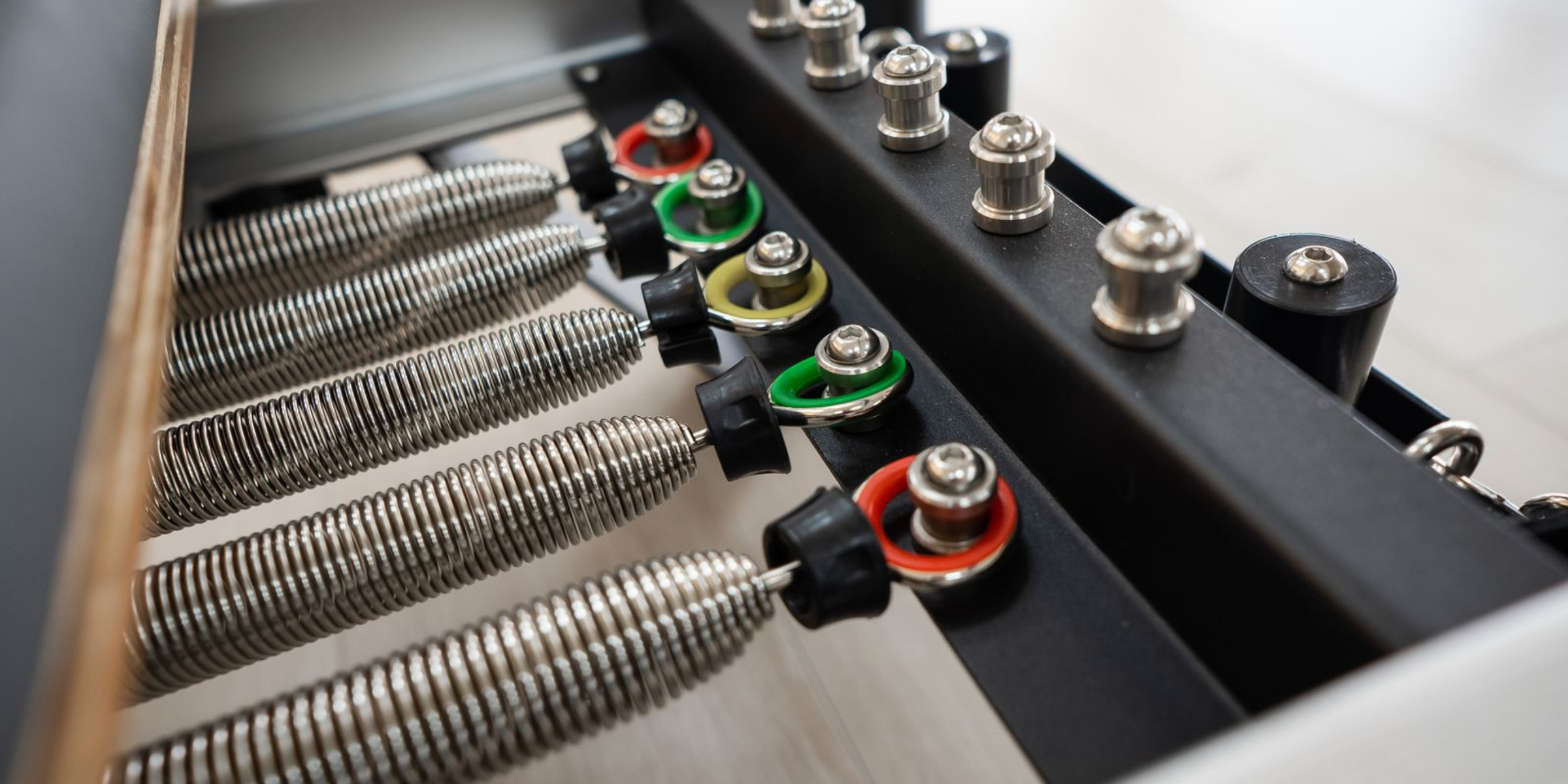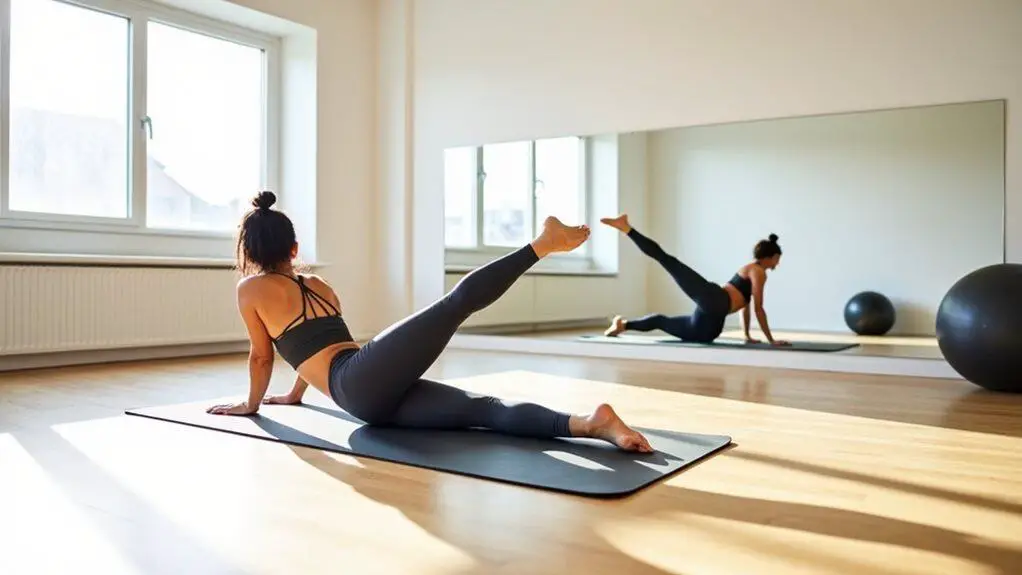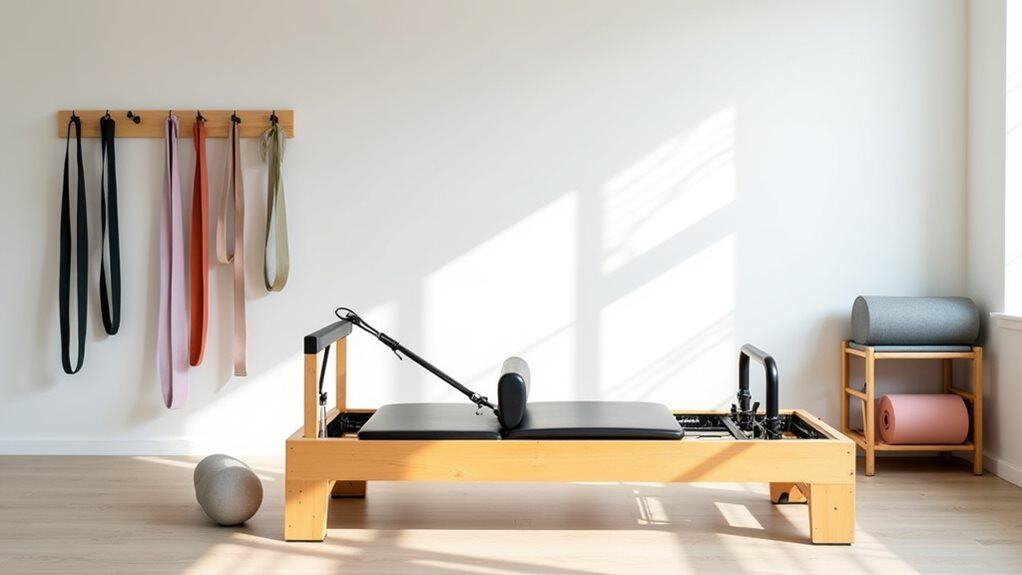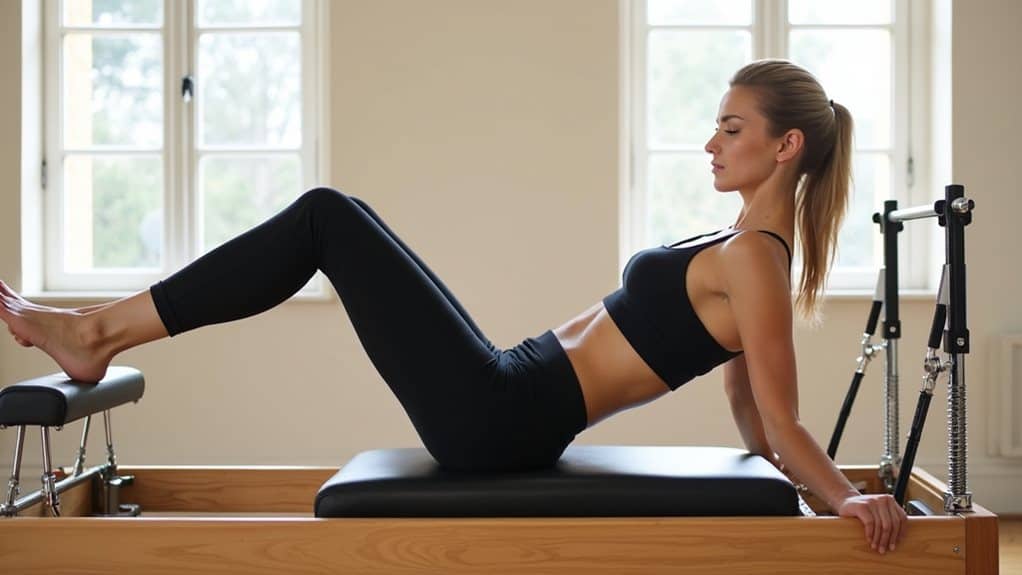A sense of harmony exists in a rhythm and flow that keeps us moving, ever-evolving. Like the sea’s undulating waves, our bodies seek balance and adaptability.
When fine-tuned, we strive to cultivate a profound connection between mind, body, and spirit, a synergy that manifests into strength, grace, and vitality. This elusive but attainable equilibrium often draws individuals to a unique form of physical fitness, a discipline hinged on control, precision, and fluidity.
Several types of Pilates machines include the Reformer, the Cadillac, the Wunda Chair, the Ladder Barrel, the Spine Corrector, the Magic Circle, and the Pilates Tower. Each offers unique exercise functionalities, targeting flexibility, strength, and balance.
As we delve into this realm, we’ll unravel the complex world of machines that support this journey, each with its distinct design and purpose, beckoning us to explore, learn, and ultimately transform.
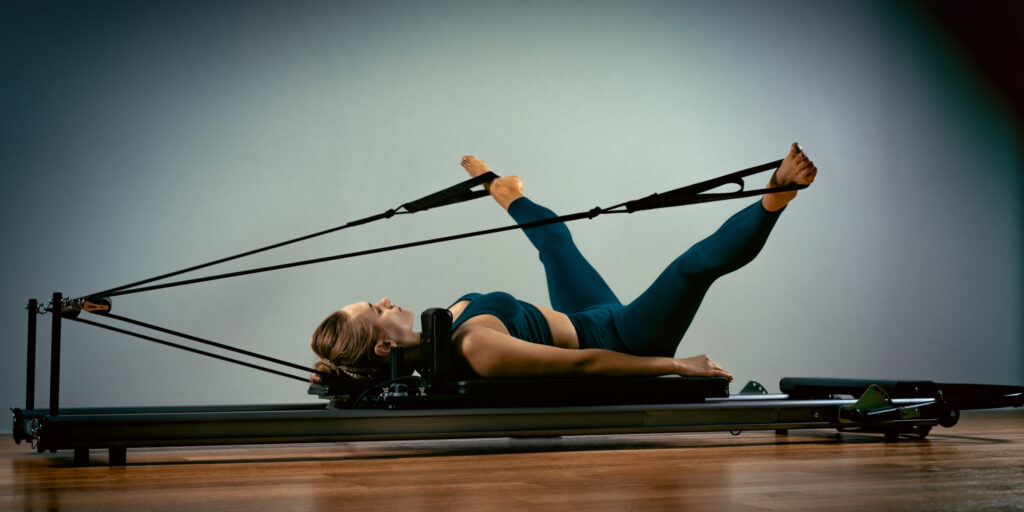
Exploring the Reformer: The Flagship Pilates Machine
The Reformer, arguably the most recognized Pilates machine, presents an innovative way to perform various exercises. This apparatus may look intimidating with its sleek and sophisticated design, but its purpose is quite the opposite.
Designed to support the body throughout the exercise process, the Reformer consists of a moving carriage rigged with springs, ropes, and pulleys. It allows many movements, ranging from simple to complex, facilitating a whole-body workout that can be modified based on individual needs and fitness levels.
The beauty of the Reformer lies in its versatility. The adjustable springs control the resistance levels, enabling the user to gradually increase strength through progressive challenges. Furthermore, the machine can cater to all types of workouts, whether one is looking to enhance flexibility, improve muscular endurance, or correct posture.
Exercises can be performed lying down, standing, sitting, pulling the straps, pushing the foot bar, perched on the football, perched on the shoulder blocks, with additional equipment, upside down, sideways, and in many other ways. The Reformer’s multi-faceted functionality makes it a powerhouse apparatus in the realm of Pilates, truly encapsulating Joseph Pilates’ vision of holistic, controlled, and fluid body movement.
The Cadillac: A Versatile Tool for Rehabilitation and Advanced Work
Step into a Pilates studio, and you’ll likely notice the Cadillac, a Pilates machine that stands out with its size and unique structure. It looks a lot like a four-poster bed with various attachments, including a trapeze, bars, and straps – hence its other name, the Trapeze Table.
Though it might appear like an intricate playground apparatus initially, the Cadillac offers tremendous versatility for Pilates exercises, making it an invaluable tool for rehabilitation and advanced work.
The Cadillac provides vast exercise possibilities, supporting the body in different positions and facilitating a wide range of motion. Its various components are designed to stretch and strengthen every body part in a controlled and safe manner.
The Cadillac is particularly beneficial for rehabilitation, as it allows movements to be performed in a supportive environment. This reduces joint and muscle strain, aiding recovery and preventing further injury.
Conversely, it also serves advanced Pilates practitioners, offering more complex exercises that challenge strength, flexibility, and balance. Whether you’re recuperating from an injury, seeking to enhance your fitness level, or pushing the boundaries of your Pilates practice, the Cadillac is a stalwart companion in your journey.
The Wunda Chair: Perfecting Balance and Strength
The Wunda Chair, a lesser-known but equally important piece of Pilates equipment, is a testament to Pilates’ blend of simplicity and complexity. At first glance, it resembles an ordinary chair with a padded surface for sitting and a lower surface to place your feet.
However, the Wunda Chair is far from ordinary. Equipped with a pedal attached to springs for adjustable resistance, it transforms into a versatile exercise machine, challenging your body’s balance and strength.
The Wunda Chair focuses on building core strength, improving balance, and increasing overall body awareness. The exercises performed on this chair are mostly done in a seated or standing position, engaging the body in ways that promote functional fitness.
It offers an intense workout by leveraging the individual’s body weight against the resistance of the springs. With exercises that range from basic to highly advanced, the Wunda Chair can cater to everyone, from beginners to advanced Pilates enthusiasts.
Despite its minimalist design, it packs a punch in terms of the range and effectiveness of exercises it supports, underscoring that in Pilates, the power of the practice often lies in its subtlety and precision.
Ladder Barrel: Enhancing Flexibility and Posture
The Ladder Barrel, with its unique combination of a rounded barrel surface and rungs of a ladder, may be less common in some Pilates settings. Still, it provides a wealth of possibilities for enhancing flexibility and posture. Its distinctive design lends itself well to exercises that aim to lengthen the spine, open the chest, and stretch the entire front of the body, thus cultivating improved posture and a sense of openness.
The barrel part of the apparatus is used for exercises that challenge spinal articulation and flexibility. It is a supportive surface to bend over, stretch, or curl around, promoting movement fluidity. Conversely, the ladder provides fixed rungs to grip or push against, enhancing strength and balance.
The Ladder Barrel’s design allows many exercises to perform sitting, standing, or lying down, accommodating various body types and fitness levels. Whether aiming to correct your posture, improve flexibility, or simply explore a different dimension of Pilates, the Ladder Barrel offers a unique blend of support and challenge to make your workout experience effective and enriching.
Spine Corrector: Restoring the Natural Curve
Designed with a distinctive hump-like shape, the Spine Corrector is a unique Pilates apparatus that is specifically intended to, as the name suggests, correct and restore the spine’s natural curvature. Created by Joseph Pilates, the Spine Corrector, also known as the Step Barrel or the Small Barrel, is an exceptional tool that improves the spine’s alignment, promotes better posture, and relieves back discomfort.
The Spine Corrector’s unique design consists of a curved surface that allows the spine to move fluidly while supporting its natural arch. This enables a series of exercises that stretch, strengthen, and mobilize the spine, which can help alleviate pain and tension caused by our often sedentary modern lifestyles.
Exercises performed on this apparatus can also target the shoulders, hips, and other body areas, providing a comprehensive workout. Though compact and unassuming, the Spine Corrector is potent for enhancing spine health, boosting flexibility, and fostering overall well-being.
Whether you’re looking to counteract the effects of a desk-bound job, improve your body’s overall alignment, or introduce an additional layer of challenge to your Pilates practice, the Spine Corrector can offer just what you need.
Magic Circle: Boosting Concentration and Muscle Tone
Unlike other Pilates apparatus with elaborate structures, the Magic Circle is strikingly simple in design. It is a ring, typically made of flexible metal or rubber, with small pads on either side for comfort. However, don’t let its simplicity fool you. The Magic Circle, also known as the Pilates Ring, is a highly effective tool for enhancing concentration and muscle tone in Pilates exercises.
The Magic Circle is used in various ways to challenge the body’s strength and stability. It can be squeezed between the hands, knees, or ankles, or pressed outward, creating resistance that requires control, precision, and focus.
This encourages greater engagement and awareness of specific muscle groups, thus improving muscle tone. The Magic Circle also heightens one’s concentration during workouts, requiring mindful movement and breath coordination.
This enhanced level of consciousness sets Pilates apart from other forms of exercise, emphasizing that physical strength and agility are intrinsically tied to the mind’s focus and control. Simple yet powerful, the Magic Circle is a testament that sometimes the smallest tools can make the biggest difference in Pilates.
The Pilates Tower: Expanding the Exercise Repertoire
The Pilates Tower, often attached to the Reformer or standing alone, is a versatile piece of equipment that expands the repertoire of Pilates exercises. Equipped with springs, bars, and straps, the Tower allows a full-body workout, engaging the core, strengthening the limbs, and enhancing overall flexibility.
The Pilates Tower allows exercises to be performed lying down, sitting, standing, or even hanging, providing a multi-dimensional workout experience. The various attachments, including a roll-down bar, push-through bar, leg springs, and arm springs, enable a wide spectrum of movements targeting different muscles and joints.
The adjustable spring settings offer a customizable resistance level, catering to all fitness levels. Additionally, the vertical frame of the Tower encourages a focus on alignment, posture, and precision, further amplifying the effectiveness of your Pilates workout.
From introducing new challenges to an existing routine to accommodating unique rehabilitation needs, the Pilates Tower is a valuable asset to anyone’s Pilates journey, offering an expansive palette of exercises to explore and master.
Choosing the Right Pilates Machine: Factors to Consider
Here are the factors to consider when choosing the right Pilates machine:
- Fitness Goals: Identity what you want to achieve from your Pilates workout. This could be improving flexibility, enhancing strength, correcting posture, or combining these.
- Fitness Level: Consider your current fitness level. Beginners might benefit more from versatile machines like the Reformer, while more advanced practitioners may prefer equipment like the Cadillac or the Pilates Tower.
- Available Space: Evaluate the space you have at your disposal. Some machines, like the Cadillac, require more space, while others, like the Magic Circle or Spine Corrector, are more compact.
- Budget: Determine your budget. Larger apparatuses like the Cadillac and Reformer are more expensive, while smaller tools like the Magic Circle are more affordable.
- Comfort and Personal Preference: Your comfort and preference are vital. It’s advisable to try different machines and choose one that you feel most comfortable with and enjoy using.
By weighing these factors, you can select the Pilates machine that aligns best with your needs, preferences, and fitness objectives.
The Future of Pilates Machines: Technological Advancements and Innovations
As we look towards the future, the field of Pilates is not immune to the sweeping changes brought about by technological advancements and innovation. From integrating smart technology to developing multi-purpose machines, the future of Pilates equipment is ripe with possibility.
One major area of advancement is incorporating digital technology into Pilates machines. Smart Pilates equipment, connected to apps or online platforms, can provide real-time feedback on performance, track progress over time, and offer personalized workout recommendations. This can greatly enhance the user’s experience, allowing for a more tailored and effective workout.
Virtual Reality (VR) and Augmented Reality (AR) are also beginning to enter the fitness industry, and Pilates is no exception. Imagine performing a Pilates routine on a virtual beach or receiving real-time, augmented feedback on your form and alignment. These technologies could significantly enhance the practice of Pilates, making it more immersive and interactive.
Moreover, as space becomes a premium in many homes, the demand for compact, multi-purpose Pilates machines is growing. Innovations in design and engineering are leading to the creation of machines that can perform the functions of several traditional apparatuses, all while being compact enough to fit in the corner of a room.
Lastly, sustainable and eco-friendly practices, including fitness equipment, are becoming increasingly important in all aspects of life. We can expect to see more Pilates machines made from sustainable materials and designed for longevity.
While it’s hard to predict exactly what the future holds, it’s clear that technology and innovation will play a significant role in shaping the next generation of Pilates machines. As always, the goal will be to enhance the effectiveness of the Pilates method, providing a comprehensive, balanced, and fulfilling workout experience.
Sources:
–https://www.phitosophy.com/types-of-pilates-machines/
–https://www.hfe.co.uk/blog/guide-pilates-equipment/
-https://www.pilatesanytime.com/blog/equipment/the-ultimate-guide-to-pilates-equipment
